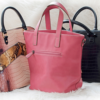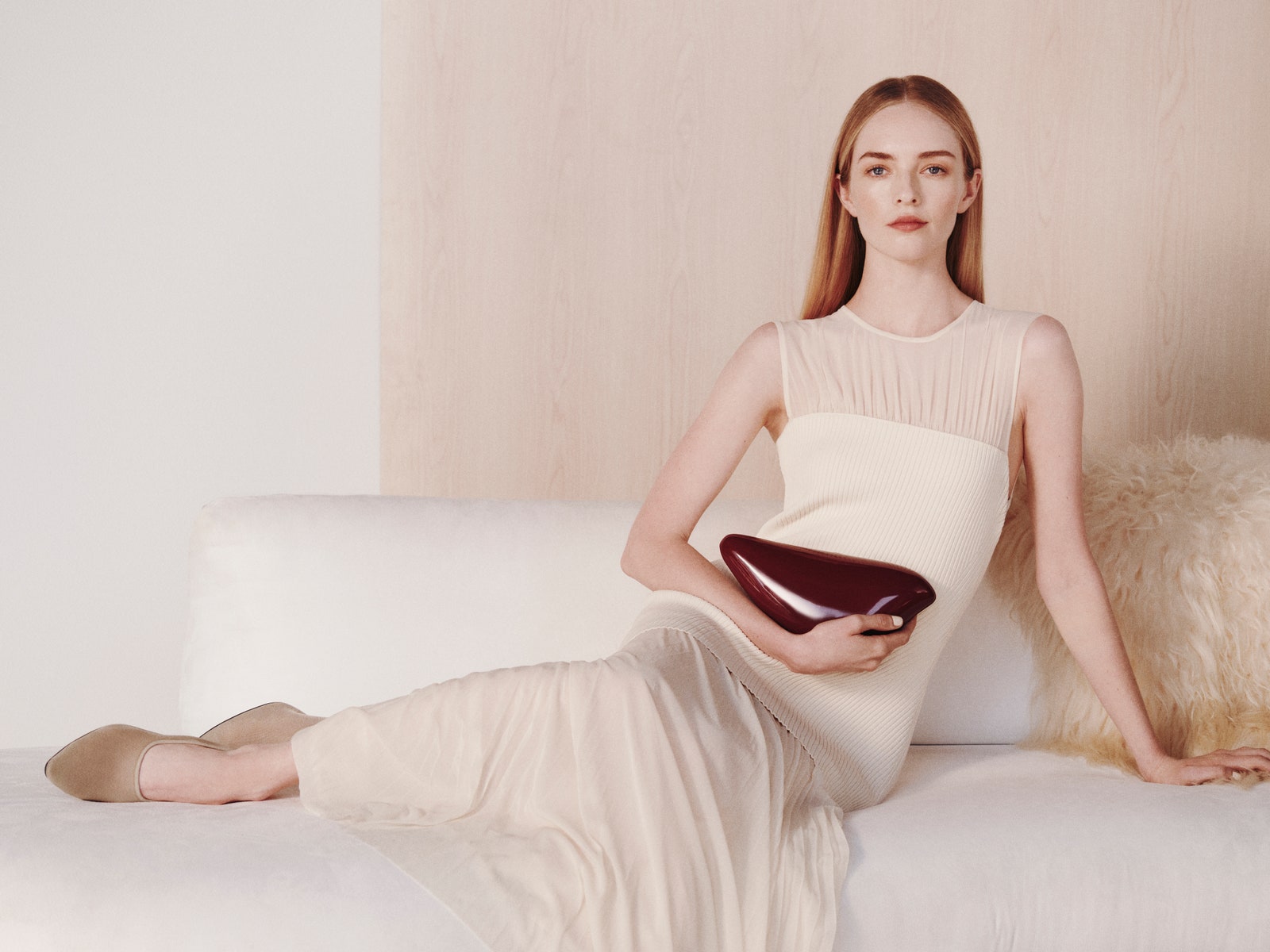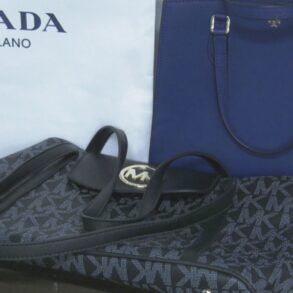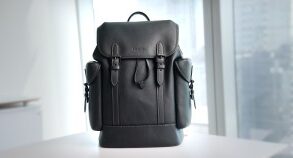It’s impossible to tell that the Eittem bags displayed in the brand’s Chelsea office are bags at all—and that’s part of their allure. Sitting on shelves alongside plants, books, and candles in the minimalist, sun-filled Manhattan space, the pieces, made from salvaged wood, look more like sculptures than something to hold your ID and lip gloss. But then founder and CEO Erin Saluti picks one up, presses a slim, stainless-steel button, and voila—the piece reveals itself as handbag. “We have this product that is a hybrid of art and sculpture and a fashion accessory that was really hard to classify,” says Saluti. Hence the name Eittem—pronounced “item”—“which sort of means everything and nothing at the same time.”
Saluti, who studied contemporary art and design at the Victoria and Albert Museum in London and interior design at London Design School, has spent much of her career in those fields. “My favorite thing up until now has been designing homes and interiors,” she says. “This a new endeavor, and for sure the most challenging one I’ve ever taken on.” It began 12 years ago, when Saluti’s husband, Joe Saluti, a woodworker by hobby, purchased a Robodrill machine that the couple kept in their Westchester garage. It allowed him to carve pieces on a curve; everything he had made up until that point had been angular. “He told me he wanted to make something for my birthday, and I sketched a bag, which I’ve been carrying for 12 years.”
Courtesy of Eittem
Courtesy of Eittem
Made—like the rest of Eittem’s offerings—from walnut, the bag garnered compliments and inquiries every time Saluti carried it. Shortly before COVID, she designed the Owl silhouette, inspired by the bird’s round face and prominent eyes. “Then we were stuck at home with this machinery and I just kept going.” Eittem officially launched last week with three styles: Owl, Moon, and Bird—all archetypes from nature, each available in wood grain and two glossy colors. The convertible bags come with a sterling silver-plated rhodium chain affixed with pendants on each end that click into the interior.
The bags are made in Eittem’s studio—just down the hall from the brand’s office—where Joe, Eittem’s VP of Manufacturing and Finance, oversees production. “This is all urban salvage,” Erin says from the back of the studio, pointing to a stack of wood planks. “We get it from a company in Long Island that, when trees fall in somebody’s yard, they’ll go collect them. I believe we are the only people sourcing wood for handbags.” Once the bags are cut, they’re completed by a production team of architecture, art, and design school grads, using tools and materials from a range of industries. Bags are sanded with the same buffing pads used to finish cars; small details, like the inlays for the chain pendants to click into, call for dental tools. The glossy bags then get multiple coats of primer, water-based paint, and an automotive-like finish, all applied by hand. “That’s an incubator normally used to grow bacteria that we use to dry our paints more quickly,” Joe says, referring to the large glass case occupying a corner of the studio. All of the materials used for the collection are sourced in the U.S., with the exception of the leather that lines the interior. “It’s Weinheimer, which is a major supplier to Hermès,” Erin says. “Erin was very particular that the inside of [the bags] not be like a box, and that they actually follow the curves of the shapes,” Joe adds. They landed on a technique that involves putting the leather in water then cutting it over a mold.
This post was originally published on this site be sure to check out more of their content.










